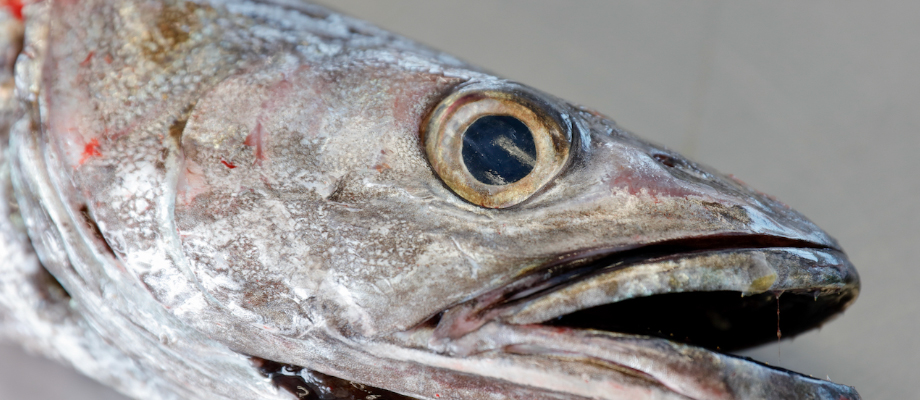Studying transboundary demersal fisheries along Africa's northwest coast

On January 21, the research vessel (R/V) Dr. Fridtjof Nansen departed Las Palmas, set for Casablanca, Morocco to commence the first scientific survey of 2024. Over the course of more than 50 days, the vessel sailed along the northwest coast of Africa to study transboundary demersal fisheries resources. This marked the vessels fifth return to the area to study bottom-dwelling species, gathering valuable data and insights crucial to the region.
“Demersal species hold significant importance for northwest Africa due to their various contributions to food and livelihoods for coastal communities,” said Maik Tiedemann, one of the cruise leaders from the Institute of Marine Research (IMR) in Norway, that coordinated the work aboard during the first part of the survey, off the coast of Morocco.
Fisheries resources like hakes – Merluccius merluccius and Merluccius senegalensis – as well as other demersal fish and shrimp species were prioritized during the survey, due to their commercial and ecological value.
“Hake is a key component of the diet here in this region, providing a valuable source of protein for the people. Its availability and affordability make it an essential food item,” explained Arnault Le Bris, a senior researcher at IMR, and one of the cruise leaders. “To understand the status of the target species, data on population sizes, distribution and stock identities are gathered,” he added.
“Gathering data on the whole life cycle of all hake species in the region is utmost important to improve shared management among neighboring countries,” added Ahmed El Achi, one of the local co-cruise leaders, who also presented his work on the “Growth and reproduction of Merluccius polli and Merluccius senegalensis in the Moroccan South Atlantic,” to his fellow survey participants.
While surveying fishery resources was a key priority, other aspects of the ecosystem were studied to enhance the understanding of factors driving the abundance and distribution of demersal resources, and contribute to knowledge on species diversity, habitats, climatic impacts, and pollution on both the shelf and the slope.
Among other things, samples of sediments at the bottom were collected from Cape Spartel to Cape Blanc to study the properties of the seafloor and the organisms living on (epibenthos) and in it (endobenthos). Data and information from this part of the survey will inform one of the first large mapping exercises of the benthic diversity on the northwest African seafloor.
“I am evaluating the diversity of different benthic communities off the seafloor, and how the composition is changing across environmental gradients such as depth, oxygen and temperature, and these findings will constitute the mapping,” said Tariq Ouztato, a Ph.D. student at the University of Abdelmalek Essaadi and the National Institute of Fisheries Research (INRH) in Morocco, and one of the local participants in the survey.
The second and third part of the survey focused on the waters of Mauritania, Senegal and The Gambia. Due to the coastal upwelling, the waters in this region are very rich in fish, supporting both a large artisanal fishery close to shore and an industrial fishery offshore.
Close to the Mauritanian coastline, the white grouper (Epinephelus aeneus) is a key species for artisanal fisheries, but like many other target species, stocks have been declining over past years. As in Mauritania, many of the most productive fisheries in Senegal and The Gambia are those for pelagic species such as sardinella, but valuable demersal resources such as octopus (Octopus vulgaris) or spiny lobster (Palinurus sp.) are an important source of income for coastal communities. In addition, there are industrial fisheries such as those for deepwater shrimp that supply a global market.
“Recognizing the importance of the commercially and ecologically valuable species in the region underscores the need for effective management and conservation measures to ensure the long-term sustainability of these valuable marine resources,” said Erik Olsen, Head of Research at IMR, who led the survey in the waters of Mauritania.
A total of 60 local scientists and technicians from Morocco, Mauritania, Senegal and The Gambia, participated in various segments of the survey, receiving hands-on training in the vessel's facilities and equipment. However, their time aboard also gave the young scientists the opportunityto showcase their work. Presentations covering a wide array of topics like key facts on important fisheries resources, monitoring activities, fish taxonomy and different types of data analysis processes and tools, were delivered, leaving both the crew and fellow young scientists inspired.
“The knowledge sharing is a truly invaluable element of the expeditions with the R/V Dr. Fridtjof Nansen, and I gained a lot from my experiences aboard, both in relation to my studies of fish larvae but also from the other participants and crew of the vessel on survey related activities and research on demersal resources and ecosystems,” said Omaima Mouiret, one of the local participants that is working on her Ph.D. at the University of Hassan II Casablanca and the INRH Casablanca, Morocco.
The data and information gathered during the survey will serve as a backbone for regional fisheries assessments and management decisions, significantly benefiting the efforts of the Fishery Committee for the Eastern Central Atlantic (CECAF).
About the Programme
The R/V Dr. Fridtjof Nansen is at the center of the EAF-Nansen Programme, a longstanding partnership between the FAO and Norway, executed in close collaboration with IMR. In collaboration with 32 countries across Africa and the Bay of Bengal, the Programme is improving fisheries policies and management practices in line with the ecosystem approach to fisheries and developing the capacity of fisheries institutions to ensure sustainable fisheries management.
The Programme aligns with the objectives of the UN Decade of Ocean Science for Sustainable Development, as well as FAO's vision for the Blue Transformation of aquatic food systems for better production, better nutrition, a better environment, and a better life for all.
